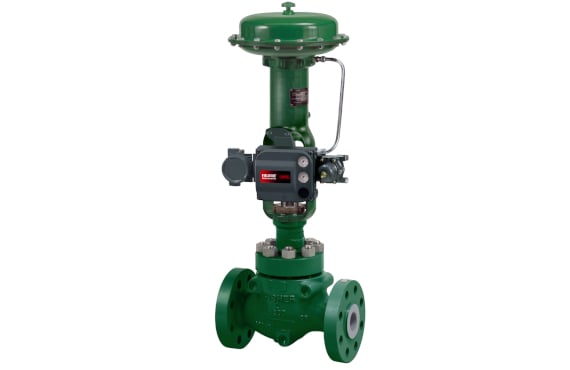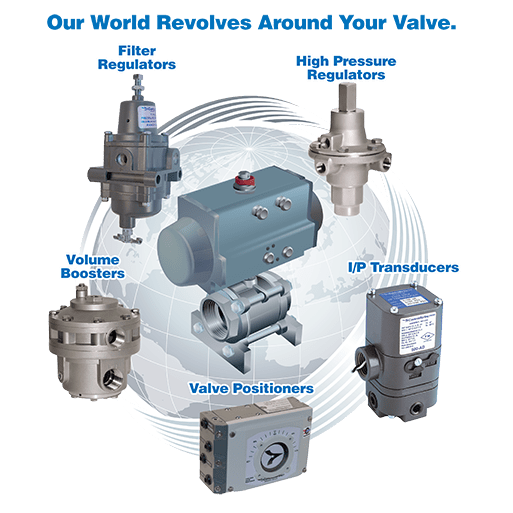Cutting-edge Control Valves: Enhancing Accuracy and Reliability
Wiki Article

Maximize Energy Financial Savings and Convenience With Advanced Structure Automation Controls
In the world of modern-day design and facility monitoring, the assimilation of innovative building automation manages stands as an essential innovation. By using the power of automation, structures can adapt, respond, and progress in ways that were once unthinkable.Power Performance Perks
Power effectiveness advantages can considerably reduce power intake and functional costs in buildings. By applying energy-efficient practices and technologies, building owners and drivers can achieve considerable financial savings while likewise adding to environmental sustainability. One of the main benefits of boosting power efficiency in structures is the decrease of utility expenses. Energy-efficient systems, such as sophisticated building automation controls, can optimize making use of sources like cooling, illumination, and home heating, leading to lower energy expenditures in time.Additionally, boosted energy efficiency can extend the lifespan of building tools and systems. By operating much more effectively, heating and cooling systems, light, and various other structure parts experience much less deterioration, leading to lowered upkeep and replacement expenses. In addition, energy-efficient structures commonly command higher residential property worths and rental prices, giving lasting monetary advantages to proprietors.
Additionally, power efficiency can boost owner convenience and efficiency. Correctly managed interior settings with ideal illumination and thermal conditions develop an even more conducive and positive work area, causing improved employee contentment and performance. In general, the energy performance advantages related to sophisticated building automation controls are complex, including cost financial savings, environmental stewardship, and occupant wellness.
Improved Comfort Control
Enhancing comfort control in structure settings requires an innovative integration of sophisticated automation systems for optimum owner health. By utilizing advanced structure automation controls, facilities can customize the indoor environment to meet the details requirements and choices of occupants. These systems allow exact guideline of ventilation, temperature level, and lights, developing a productive and comfortable atmosphere. Occupant complete satisfaction and efficiency are closely connected to thermal convenience, making it vital to have systems in position that can adjust to transforming problems in real-time.By including these sophisticated controls, buildings can not only improve convenience yet also boost energy effectiveness by maximizing system operations based on real occupancy and use patterns. Eventually, prioritizing owner comfort through sophisticated automation systems leads to a more pleasurable and much healthier indoor setting.
Functional Effectiveness Improvements

Furthermore, the application of real-time tracking and analytics tools makes it possible for building operators to determine power inefficiencies and operational anomalies quickly. By continuously keeping track of energy use patterns and system performance metrics, modifications can be made in real-time to enhance power intake and ensure peak operational efficiency. control valves. Furthermore, incorporating demand action techniques right into structure automation controls can further enhance operational performance by dynamically adjusting energy usage based upon grid problems and rates signals
Indoor Environment Optimization
Reliable interior environment optimization is a fundamental facet of building automation controls, ensuring passengers' convenience and health while maximizing energy savings. By using advanced sensors and controls, developing automation systems can constantly keep track of and go to my blog adjust temperature, moisture degrees, air high quality, and ventilation to develop an ideal indoor setting. Keeping constant and comfy problems not just improves owner contentment but also improves productivity and total health.Interior environment optimization also plays a vital function in power effectiveness. By fine-tuning air conditioning, air flow, and heating systems based on real-time information and tenancy patterns, constructing automation controls can significantly decrease energy consumption - control valves. Executing methods such as demand-controlled air flow and thermal zoning can aid lessen energy waste while ensuring that each location of the building gets the necessary conditioning.

Lasting Atmosphere Production
Building automation controls not only optimize interior climate problems for energy performance and resident convenience however also lay the structure for producing a lasting atmosphere through tactical monitoring of sources and systems. By integrating sophisticated building automation modern technologies, such as sensors, actuators, and smart software program, facilities can change and monitor power usage in real-time to lessen waste and minimize their carbon footprint. These systems allow anticipating maintenance, recognizing possible issues prior to they intensify and maximizing devices performance to enhance long life and effectiveness.Furthermore, sustainable setting development extends past energy management to incorporate water preservation, waste reduction, and indoor air high quality renovation. Structure automation controls can control water use, spot leaks, and make sure correct garbage disposal techniques, contributing to general sustainability efforts. Additionally, by managing and checking air flow and purification systems, these modern technologies enhance occupant health and performance while lowering power usage associated with cooling and heating procedures.
Verdict
To conclude, progressed building automation manages offer significant advantages in regards to energy savings, comfort control, Learn More functional effectiveness, indoor climate optimization, and developing a lasting atmosphere. By carrying out these controls, structures can accomplish optimal efficiency while lowering power usage and improving occupant convenience. It is obvious that using sophisticated automation innovation is important in improving building performance and developing a much more sustainable future.Power effectiveness benefits can considerably website link reduce power usage and functional costs in structures. Generally, the energy performance benefits linked with sophisticated building automation controls are diverse, incorporating expense financial savings, environmental stewardship, and occupant wellness.
Furthermore, incorporating need reaction methods right into building automation controls can better boost operational performance by dynamically adjusting energy use based on grid conditions and pricing signals.
Building automation controls not just maximize interior environment problems for energy effectiveness and passenger comfort however also lay the foundation for creating a sustainable setting via critical monitoring of systems and sources.In final thought, advanced structure automation regulates deal considerable advantages in terms of energy savings, comfort control, functional effectiveness, indoor environment optimization, and developing a lasting environment.
Report this wiki page